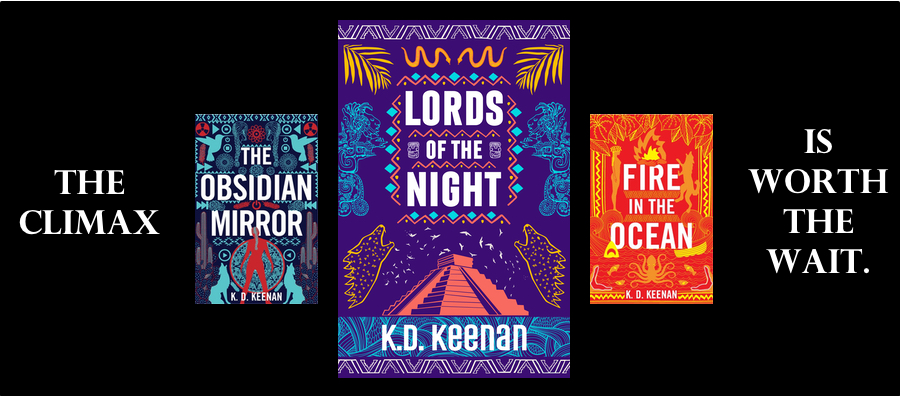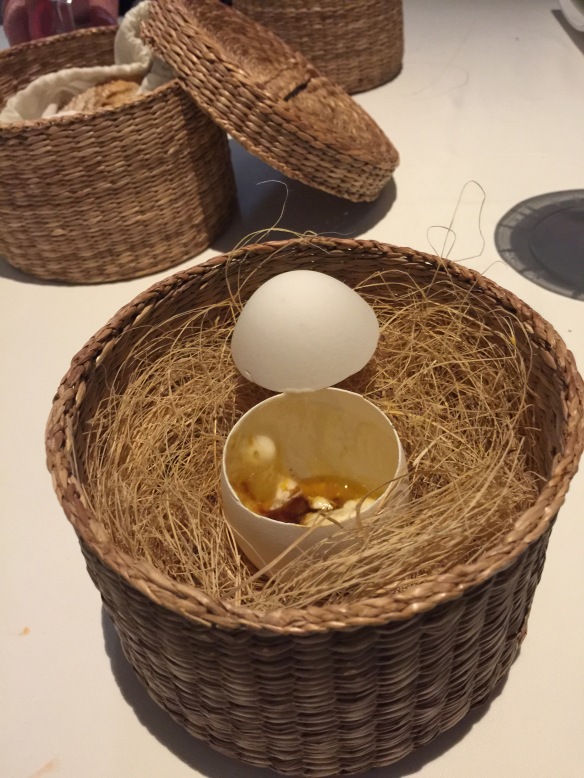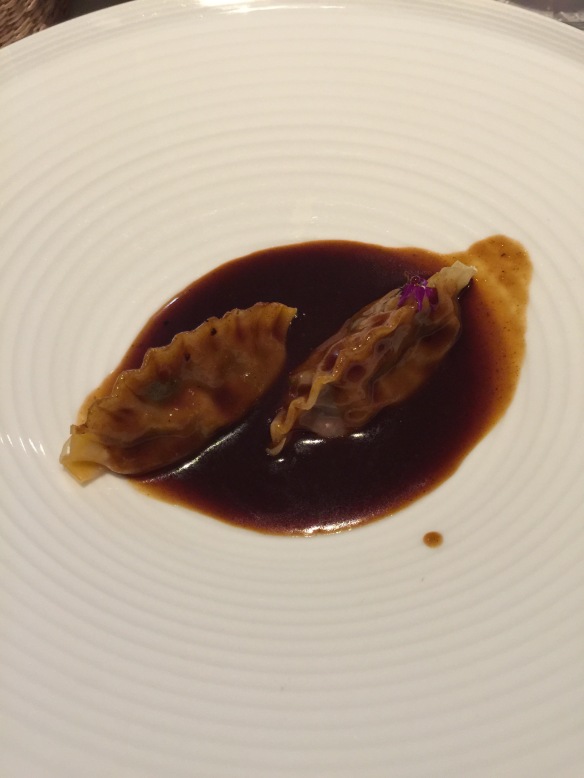Restaurante Choco, where we ate last night, turned out to be up to the very latest minute in chi-chi gourmet food. We had the tasting menu, and every dish was presented in some artistic manner. It also happened to be delicious, which is kind of the point. Oddly, it’s in kind of a run-down neighborhood of Cordoba. You can’t see it from the street. There is a tapas bar called Choco Bar. If you inquire at the bar, someone walks you around the side of the building to a most unpromising entrance fronted by filthy cobbles. Inside, everything is avant-garde white on white, with odd embellishments like a chair on the wall, backed by painted cardboard and encrusted with what looks like someone’s homework.
I don’t remember all the courses, but each one was presented with some artistic flair. There were cornichons of dried seaweed filled with pickled vegetables and presented on a large piece of white coral. There were raviolis stuffed with something yummy that we don’t remember, draped over a piece of driftwood. There were coddled eggs in the shell, presented in a nest-like basket. I had been hungry when we arrived, but after a while, I became somewhat worried about finishing. The servings were tiny, but there were a lot of them, and after the final dish was served, they came by with more–little cookies which I surreptitiously wrapped in paper napkins I had in my purse for emergencies and tucked away for future consumption.
We returned to the hotel quite late and headed for bed. I slept until almost 10 am this morning. We ate breakfast and headed back to the old town to see the Alcazar of Cordoba. Today, the temperatures were more like what we had been warned about–it got up to at least 100 degrees.
Our first stop was the Museum of Al-Andalus Culture–Moorish culture–the museum that had been about to close when we visited the day before. It is not large, being lodged in an ancient Moorish defensive tower at the end of the Roman Bridge. They had some wonderful models of the Mezquita and other buildings in Cordoba–as well as the Alhambra. I actually think one of my favorite parts was a room where there were four wax dummies representing Maimonides, the 12thC Sephardic Jewish philosopher; Averroes, a Moorish philosopher and polymath (real name: Abū l-Walīd Muḥammad Ibn ʾAḥmad Ibn Rušd); Ibn Arabi, a Moorish Syufi mystic; and King Alfonso X, called “the Wise.” As the spotlight rested on each in turn, a recording played a quote from each man . All of them had astonishing insight for their day about acceptance, inclusion, the role of science and religion, and more.

This is actually a tiny model of La Mezquita, showing it as it was originally built by Caliph Abd al-Rahman I. In the Museo de Vida Al-Andulus, Cordoba.

Before we left the museum, we asked where the bathrooms were. They were behind this tiny, Alice-in-Wonderland door, then down a flight of stairs.
If you plan to come to Spain and want to see some palaces, I recommend starting with the Alcazar in Cordoba, because after seeing the Alcazars of Seville and Granada, the Cordoba Alcazar is pretty disappointing. It’s an ancient Moorish defensive castle, heavy and grim, that was gifted by Ferdinand and Isabella to the Spanish Inquisition–and it retains some of that feeling. Kind of dungeon-ish, though the gardens are beautiful.
By now, we desperately needed hydration. We walked through the winding streets to a nearby restaurant that Tom had researched, El Churrasco. This was nicely air-conditioned, and we sat in a pretty (enclosed) patio. I ate a cooling lunch of water, gazpacho, water, wine, water, salad, water, and a drink made of sparkling wine and lemon sherbet. And then we had some water.
We had talked over visiting another palace next, but decided to skip it. I did some shopping on the way back to the car, but had lost my enthusiasm for more palaces. I am sure I’ll recover, though.






Chair on the wall is really weird. Bet Rick Steves didn’t get to see that one! You’re giving all of us readers an education on Spanish architecture and some history thrown in. Love it!!
LikeLike